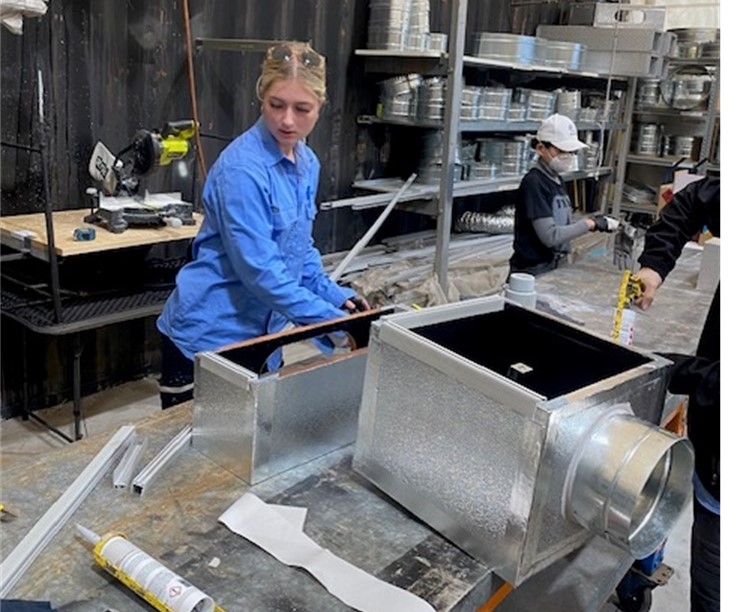
When it comes to sustainable and environmentally friendly HVAC solutions, phenolic materials stand out as the superior choice.
This innovative material offers a powerful combination of energy efficiency, durability, and eco-conscious properties that make it an ideal option for green building practices.
At its core, phenolic materials excel in minimizing energy consumption and reducing operational costs.
Its exceptional thermal resistance and airtight construction work in tandem to prevent heat transfer and air leakage, translating into significant energy savings over the system's lifetime.
This energy-efficient performance directly contributes to lowering a building's carbon footprint and minimizing its environmental impact, aligns with global efforts to combat climate change and promotes responsible energy use.
Moreover, phenolic insulation is inherently resistant to moisture, mould, and bacterial growth, ensuring a hygienic and healthy indoor environment.
Unlike traditional insulation materials that can harbour and promote microbial growth, phenolic insulation eliminates the risk of particulate shedding, making it an excellent choice for maintaining superior air quality in sensitive spaces like hospitals, cleanrooms, and other critical facilities.
Phenolic insulation's durability and longevity further amplify its sustainability credentials. Its robust construction and resistance to corrosion, UV exposure, and environmental degradation ensure an extended service life, reducing the need for frequent replacements and contributing to waste reduction. This long-lasting performance not only minimizes the depletion of natural resources but also reduces the embodied energy associated with manufacturing and transportation, further minimizing the environmental footprint.
Phenolic material's lightweight and flexible nature translates into reduced transportation costs and emissions, leading to a lower

overall carbon footprint throughout its lifecycle.
This attribute also simplifies installation processes, minimizing the need for heavy machinery and reducing the associated environmental impacts.
By choosing phenolic insulation for HVAC applications, building owners and operators can confidently embrace a solution that prioritizes environmental stewardship, long-term cost-effectiveness, and occupant health and well-being.
This comprehensive approach not only supports sustainable construction practices but also aligns with the growing demand for eco-friendly and high-performance building solutions, making phenolic insulation an exceptional choice for those committed to responsible and forward-thinking building design.
When it comes to sustainable and environmentally friendly HVAC solutions, phenolic materials stand out as the superior choice.
This innovative material offers a powerful combination of energy efficiency, durability, and eco-conscious properties that make it an ideal option for green building practices.
At its core, phenolic materials excel in minimizing energy consumption and reducing operational costs.
Its exceptional thermal resistance and airtight construction work in tandem to prevent heat transfer and air leakage, translating into significant energy savings over the system's lifetime.
This energy-efficient performance directly contributes to lowering a building's carbon footprint and minimizing its environmental impact, aligns with global efforts to combat climate change and promotes responsible energy use.
Moreover, phenolic insulation is inherently resistant to moisture, mould, and bacterial growth, ensuring a hygienic and healthy indoor environment.
Unlike traditional insulation materials that can harbour and promote microbial growth, phenolic insulation eliminates the risk of particulate shedding, making it an excellent choice for maintaining superior air quality in sensitive spaces like hospitals, cleanrooms, and other critical facilities.
Phenolic insulation's durability and longevity further amplify its sustainability credentials. Its robust construction and resistance to corrosion, UV exposure, and environmental degradation ensure an extended service life, reducing the need for frequent replacements and contributing to waste reduction. This long-lasting performance not only minimizes the depletion of natural resources but also reduces the embodied energy associated with manufacturing and transportation, further minimizing the environmental footprint.
Phenolic material's lightweight and flexible nature translates into reduced transportation costs and emissions, leading to a lower

overall carbon footprint throughout its lifecycle.
This attribute also simplifies installation processes, minimizing the need for heavy machinery and reducing the associated environmental impacts.
By choosing phenolic insulation for HVAC applications, building owners and operators can confidently embrace a solution that prioritizes environmental stewardship, long-term cost-effectiveness, and occupant health and well-being.
This comprehensive approach not only supports sustainable construction practices but also aligns with the growing demand for eco-friendly and high-performance building solutions, making phenolic insulation an exceptional choice for those committed to responsible and forward-thinking building design.

